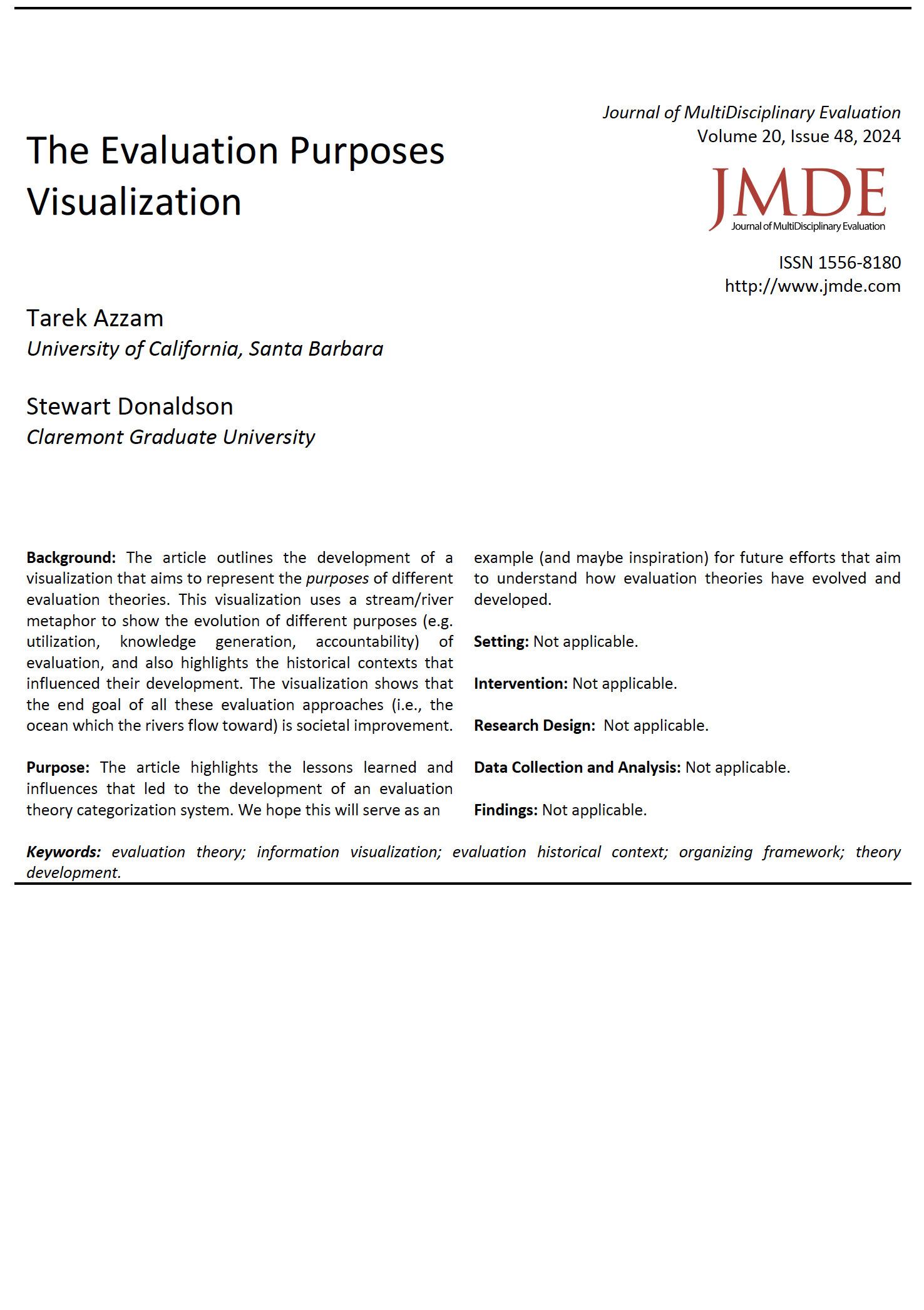The Evaluation Purposes Visualization
Main Article Content
Abstract
Background: The article outlines the development of a visualization that aimed to represent the purpose of different evaluation theories. This visualization used a stream/river metaphor to show the evolution of different purposes (e.g. utilization, knowledge generation, accountability) of evaluation, and also highlighted the historical context that had influenced their development. The visualization shows that the end goal of all these evaluation approaches (i.e. the ocean in which the rivers flow towards) is societal improvement.
Purpose: The article highlights the lessons learned and influences that led to the development of an evaluation theory categorization system. We hope that this would serve as an example (and maybe inspiration) for future efforts that aim to understand how evaluation theories have evolved and developed.
Setting: Not applicable.
Intervention: Not applicable.
Research Design: Not applicable.
Data Collection and Analysis: Not applicable.
Findings: Not applicable.
Downloads
Article Details

This work is licensed under a Creative Commons Attribution-NonCommercial 4.0 International License.
Copyright and Permissions
Authors retain full copyright for articles published in JMDE. JMDE publishes under a Creative Commons Attribution-NonCommercial 4.0 International License (CC BY - NC 4.0). Users are allowed to copy, distribute, and transmit the work in any medium or format for noncommercial purposes, provided that the original authors and source are credited accurately and appropriately. Only the original authors may distribute the article for commercial or compensatory purposes. To view a copy of this license, visit creativecommons.org
References
Alkin, M. C. (Ed.). (2004). Evaluation roots: Tracing theorists' views and influences. Sage. https://doi.org/10.4135/9781412984157 DOI: https://doi.org/10.4135/9781412984157
Alkin, M. C., & Christie, C. A. (2012). An evaluation theory tree. In M.C. Alkin & C.A., Christie (Eds.), Evaluation roots: A Wider Perspective of Theorists? Views and Influences (2nd ed., pp.11-58). Guilford Press.
House, E. R. (1975). Justice in evaluation. In G.V., Glass (Eds.) Evaluation Studies Review Annual (pp. 75-100). Sage.
Rawls, J. (1971). A theory of justice. Harvard University Press. https://doi.org/10.4159/9780674042605 DOI: https://doi.org/10.4159/9780674042605
Shadish, W. R., Cook, T. D., & Leviton, L. C. (1991). Foundations of program evaluation: Theories of practice. Sage.
Weiss, C. H. (1998). Evaluation: Methods for studying programs and policies. Prentice Hall.

